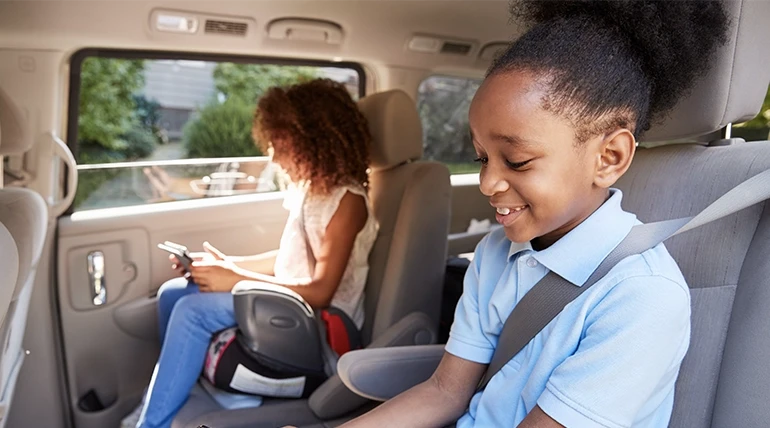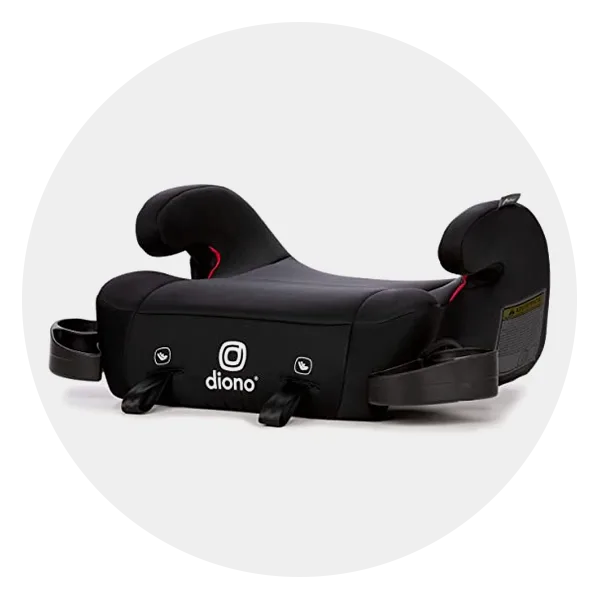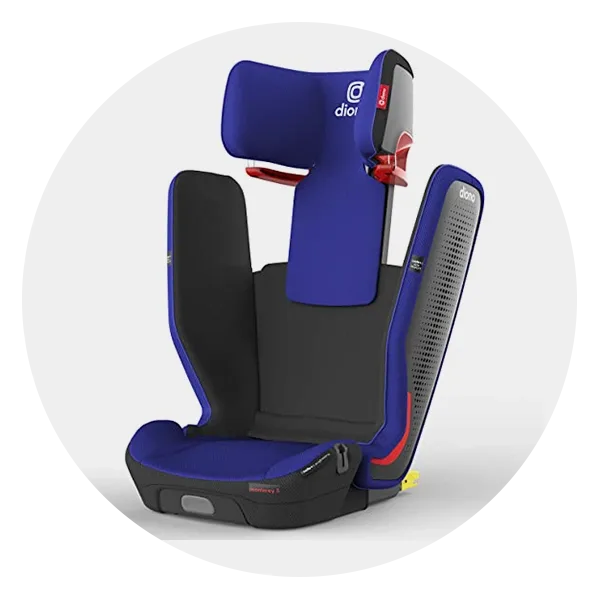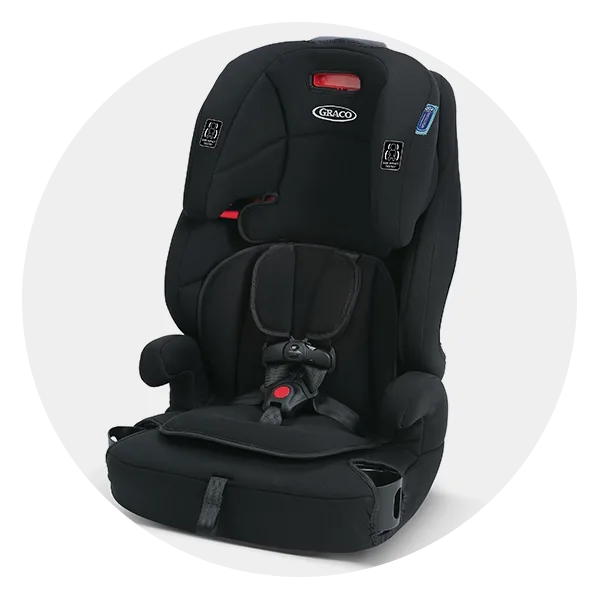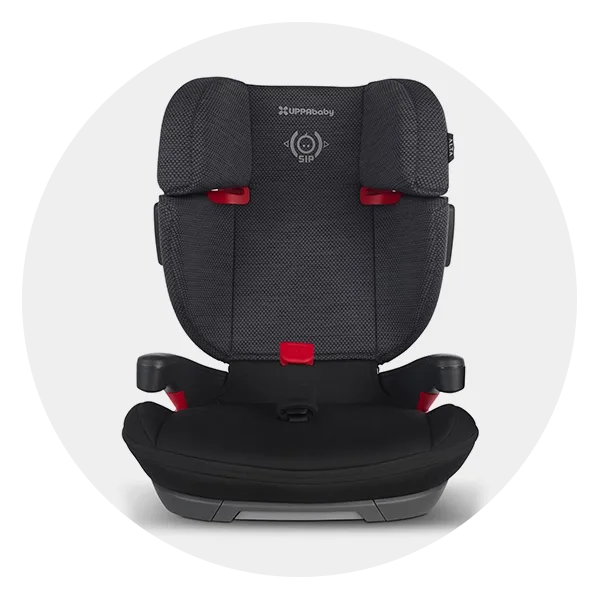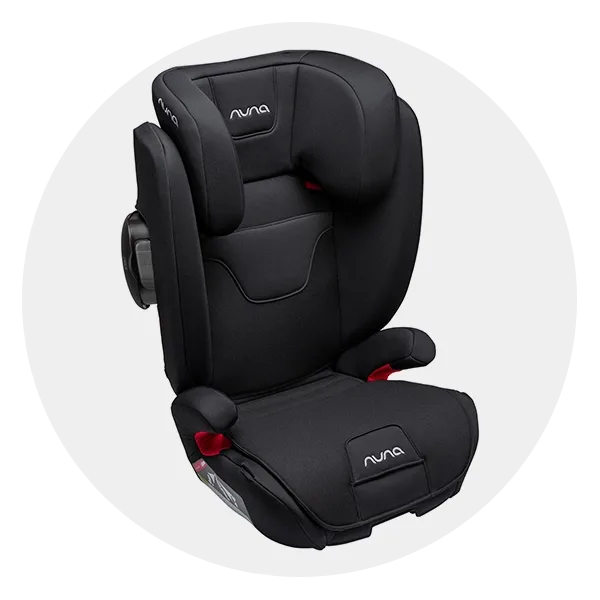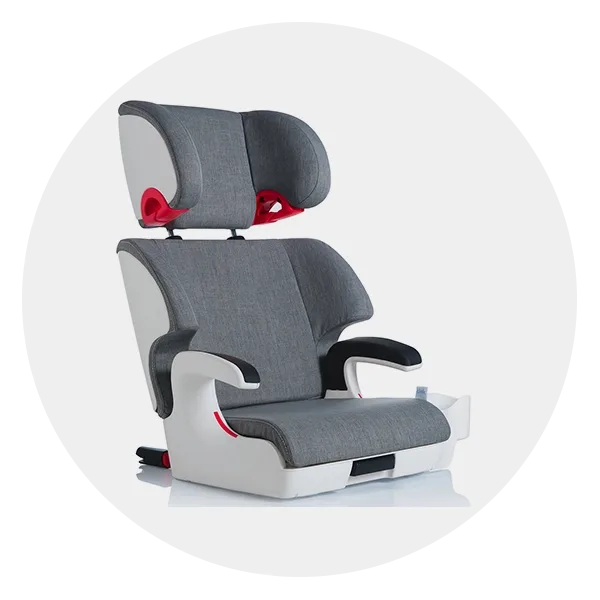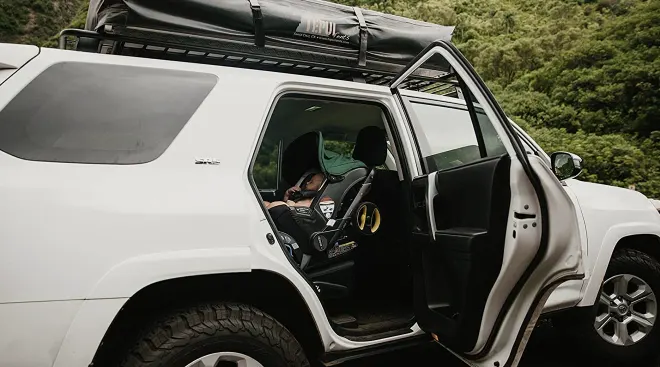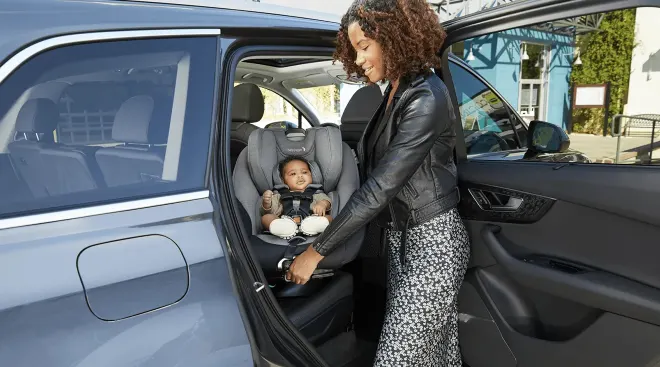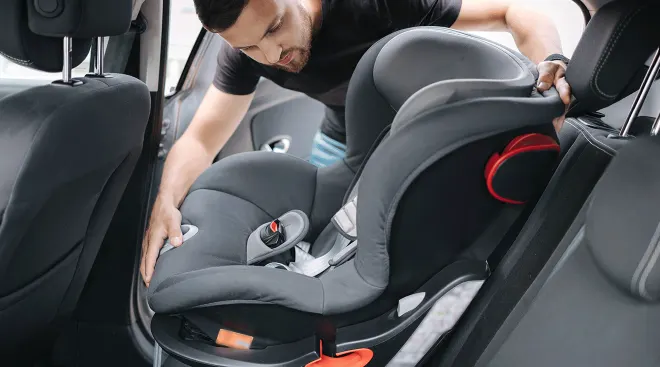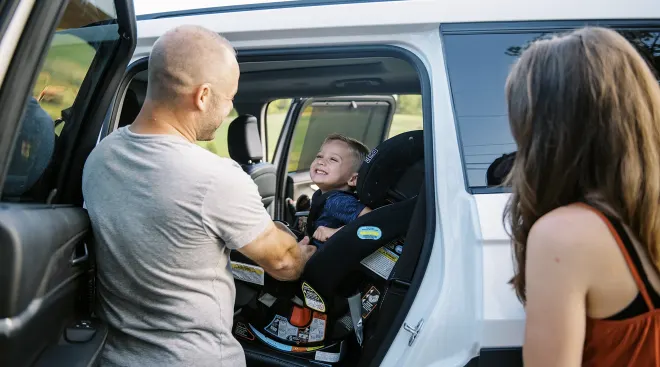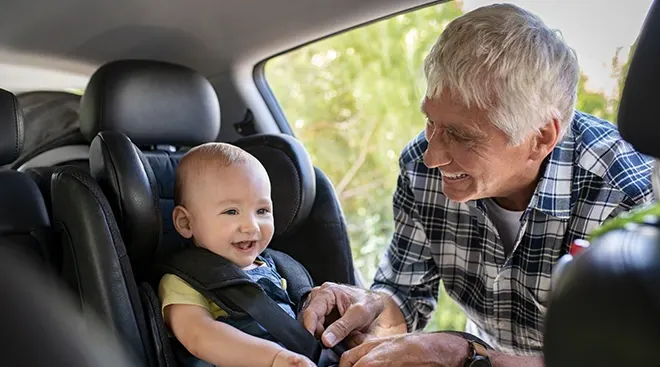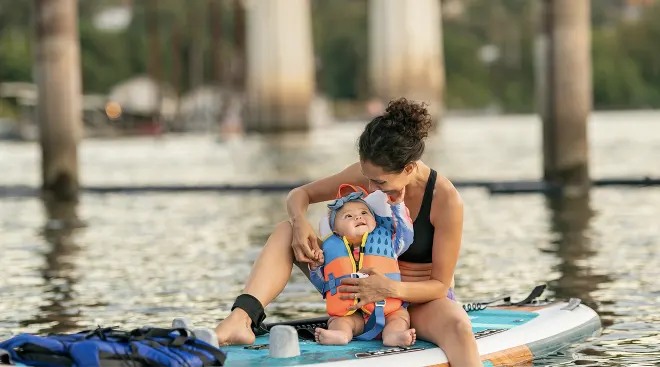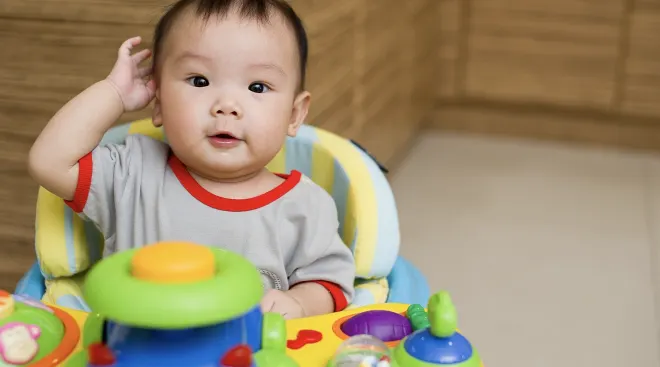10 Best Booster Seats to Keep Your ‘Big Kid’ Safe
Thought the world of car seats was complex? Booster seats are a whole other beast—and you probably have a list of questions. When are they safe for children to use? What type of booster seat do you need? How do you install them? From navigating the various requirements and regulations to picking the right option for your kiddo, choosing a booster car seat comes with a lot of information to digest. Feeling overwhelmed? Don’t stress. We’ve broken it all down in one comprehensive guide to the best booster seats on the market. Read on for the full lowdown.
The first step is understanding when it’s time to make the switch from a forward-facing car seat to a booster seat. As its name implies, a booster seat gives children a “boost” of height to align more safely with the seat belt and headrest, and often secures them with a seatbelt as opposed to a five-point safety harness. According to the National Highway Traffic Safety Administration (NHSTA), all children should remain in “a forward-facing car seat with a harness and tether until they reach the top height or weight limit allowed by your car seat manufacturer.” Once those limits are reached—which typically happens around the time a child is 4 years old and 40 inches tall—it’s time to make the move to a booster car seat.
Most children will be in a booster seat for several years. According to the CDC, children must use a booster seat until a seat belt fits properly without one. That means the lap belt sits across the thighs (not stomach) and the shoulder belt comes across the center of the shoulder and chest (not the face or ears). Kids should also be able to keep their back flat against the seat with their feet touching the floor. Most children don’t reach these requirements until around 9 to 12 years old—making a solid booster seat selection that much more important.
There are multiple types of booster car seats to consider: high back, backless or a combination. Here’s how they differ:
- High back booster seats. This is typically the more secure option, thanks to its high back (hence the name) and headrest. These features are especially important if your car has low seat backs or seats without headrests, as a child’s head should always be supported. High back booster seats also allow kids to safely snooze in the car, thanks to the head support. Beyond the head support, high back booster seats often help position the seat belt on your child correctly and tend to provide more side impact protection than their backless counterparts. However, the height and weight ranges tend to be more limited, often maxing out at around 100 pounds.
- Backless booster seats. These options come without the back and headrest, making them smaller, lighter and easier to transport. They also typically accommodate a wider range of heights and weights, allowing them to be used over a longer period of time. However, if your car doesn’t have headrests or seats high enough to reach your children’s ears for adequate head support, backless is not the best option.
- Two-in-one booster seats. Torn between the two types? A combo might be the best booster car seat for you. These are booster seats that convert from a high back to a backless, offering the best of both worlds.
As with any baby (or in this case, big kid) gear purchase, it’s important to consider certain factors before making a final decision. Here are some things to keep in mind when shopping for the best booster car seat for your family:
- LATCH system. Many booster seats have the option to install it with rigid LATCH connectors, as opposed to just a seat belt. It’s not essential, but it does provide a more secure installation—and keeps the booster seat in place even when your child isn’t in it.
- Belt positioners. Seat belts often work solo (or potentially in tandem with the LATCH system) to secure both your child and the booster seat in the car. Belt positioners help ensure that the seat belt is positioned correctly every single time, keeping your passenger as safe as possible.
- Seat dimensions. Bigger kids equals bigger car seats. Booster seats, especially the high back versions, can take up a significant amount of space in your vehicle. However, there are several that have been designed with a slimmer footprint (18 inches or less), which is ideal for families looking to fit multiple car seats in one row.
- Extra features. Seat reclines, cupholders, special fabrics—booster seats can have just as many bells and whistles as their convertible car seat counterparts. Decide what’s most important to you and your lifestyle before selecting a booster seat.
Now that you’ve gotten the lowdown on what to look for when shopping for a booster seat, here are a few editor-approved choices to browse. From backless models to convertible options, these are the best booster car seats on the market today.
Best backless booster seat
- LATCH connectors and front adjusters make it quick and easy to install securely
- Two retractable cup holders
- Some users say the seat lacks padding
Backless booster seats get a bad rep—but not the Diono Solana 2. While some backless booster seats aren’t always as comfortable or as secure as their high-back counterparts, this model offers top-notch safety and comfort. It’s one of the few backless booster seats that features LATCH connectors to safely install it in any vehicle (meaning it’s not just the seat belt and your child’s weight keeping the seat in place). Plus, the ergonomically contoured and cushioned seat provides a wide, comfy area with room to grow (up to 120 pounds). Space-saving and efficient, the Diono Solana 2 is at the top of the backless class.
Specs at a glance:
- Dimensions: 20.1 inches (W) x 16.1 inches (D) x 9.4 inches (H)
- Booster seat weight: 6 pounds
- Weight capacity: 40 pounds to 120 pounds
- Height limit: Up to 63 inches
Best high back booster seat
- The Monterey 5ist is not only side-impact tested, but also rollover tested and rear-impact tested for the safest possible seat
- 12 different headrest positions, plus easily expandable sides
- The foldable feature and carry strap makes this high back booster just as portable as its backless counterparts
- High price point
- Heavier than other options
If you want to invest in a booster seat that grows with your child, make it the Diono Monterey 5iST FixSafe. The latest iteration from Diono offers one of the widest ranges of height and width adjustments (both of which can be done with one hand), meaning you can use it for years to come. Better yet, the booster seat folds down in seconds into a compact package with a built-in handle and carrying straps. Safety-wise, it’s a top-notch choice, thanks to eight layers of side-impact protection and rigid latch connectors. Not surprisingly, it earned a Best of Baby award for best booster seat in 2021.
Specs at a glance:
- Dimensions: 24.8 inches tall x 17.9 inches wide x 15 inches deep; 23.4 inches tall x 17.9 inches wide x 7.5 inches deep (folded)
- Booster seat weight: 18.7 pounds
- Weight capacity: 40 lbs to 120 lbs
- Height limit: Up to 63 inches
Best travel booster seat
- It’s one of the lightest and narrowest high back booster seats
- Two pop-out cup holders and an adjustable recline for maximum comfort
- The reinforced aluminum back provides an additional safety feature
- It’s folded size isn’t the smallest on the market, but it’s comparable to a carry on suitcase
Travel booster seats can often seem basic—but the Peg Perego Viaggio Flex 120 excels in both comfort and security. The high back booster folds down and can be conveniently carried in a travel bag. When unfolded, it provides both adjustable side impact protection and a rigid LATCH system (neither of which are typical features on a travel booster seat) for the safest ride no matter where you are. Plus, the headrest, backrest, side protection and seat can all be adjusted independent of one another for a completely custom fit. For families on-the-go who don’t want to compromise in safety or quality, the Peg Perego Viaggio Flex is a top pick.
Specs at a glance:
- Dimensions: 22 inches deep x 17.25 inches wide x 26.75 inches tall; 23.5 inches deep x 17.25 inches wide x 9.75 inches tall (folded)
- Booster seat weight: 14 pounds
- Weight capacity: 40 pounds to 120 pounds
- Height limit: Up to 63 inches
Best booster seat with a five point harness
- Eight adjustable positions
- Belt guides help to properly position the seat belt in the booster seat
- It has a narrow footprint, ideal for families fitting multiple car seats across one row
- It has a lower height and weight limit than some of its competitors
Ready to make the transition to a high back booster seat, but not quite ready to let go of the security of a five-point harness? Enter the Graco Tranzitions 3-in-1 Harness Booster, which combines a harness booster, high-back booster and backless booster all in one. Beyond its triple functionality, it’s one of the best booster seats thanks to its affordable price and plentiful features (which include dual cup holders, an adjustable headrest and a machine-washable seat pad).
Specs at a glance:
- Dimensions: 17.4 inches deep x17.5 inches wide x 26.5 inches tall
- Booster seat weight: 20 pounds
- Weight capacity: 22 pounds to 65 pounds (harness booster); 40 pounds to 100 pounds (high back and backless booster)
- Height limit: 49 inches maximum (harness booster); 38 inches to 57 inches (high back booster); 43 inches to 57 inches (backless booster)
Best booster seat with seat belt positioning
- It has some of the best crash test results on the market
- Padded headrest and seven adjustable positions for maximum comfort
- Fabric is fire retardant free and contains no harmful chemicals
- It has a lower height and weight limit than some of its high back competitors
- Wider footprint than other options
For a booster seat to provide the most secure ride, proper seat belt alignment is critical. Seat belt positioners ensure that your child is safely buckled in every time, with no extra fuss or confusion. One of the best booster car seats with these guides is the UPPAbaby Alta, which features a patented SecureFit belt routing system to make sure the lap and shoulder belt are properly positioned with ease. This system also helps to prevent submarining, which is when a person slides out from under the lap belt during a collision. Combine that with the Alta’s rigid LATCH connectors, and this is a booster seat that won’t budge.
Specs at a glance:
- Dimensions: 20 inches deep x 19 inches wide x 33 inches tall
- Booster seat weight: 16.6 pounds
- Weight capacity: 40 pounds to 100 pounds
- Height limit: 38 inches to 57 inches
Best narrow booster seat
- LATCH connectors and a SuperCinch tightener ensure that this booster seat is securely installed
- The height adjustment is done at the waist, as opposed to the head, to provide appropriate support for the head, neck, and torso
- All fabrics are removable and machine-washable
- This booster seat doesn’t have an adjustable width
Tight on space but don’t want to skimp on features? The Chicco KidFit 2-in-1 Booster Seat provides the best of both worlds. At just 17 inches wide, this booster seat has one of the narrowest footprints available—perfect for those with compact cars or squeezing multiple car seats across one row. It can also be used in both high back and backless mode, has an ergonomically contoured seat with double padding for extra comfort, and features side wings for extra impact protection. With all of those features (and more), this booster seat lives up to the term “small but mighty.”
Specs at a glance:
- Dimensions: 17 inches wide x 17 inches deep x 26 inches tall
- Booster seat weight: 10 pounds
- Weight capacity: 40 pounds to 110 pounds
- Height limit: 38 inches to 57 inches
Best 2-in-1 booster seat
- Nine different heights and shoulder positions—and three different depth positions
- In high back mode, the booster seat can also be adjusted to eight different recline positions
- Greenguard Gold certified
- It has a wide profile, so it’s not the best option for smaller cars
Not sure whether to go with a high-back or backless booster seat? With the Nuna AACE, you don’t have to choose. The booster seat not only offers a convertible design, it also features a 3D growth system—meaning it’s adjustable in height, width and depth (giving growing kids the support and space they need). A combination of energy-absorbing foam and side-impact protection pods make this one of the safest options around. Other nifty features include a one-handed, customizable recline, colored belt-path indicators that make installation basically fool-proof.
Specs at a glance:
- Dimensions: 14.6 inches deep x 21.5 inches wide x 26 inches tall (lowest position); 15 inches deep x 22.5 inches wide x 33 inches tall (highest position)
- Booster seat weight: 15.6 pounds
- Weight capacity: 40 pounds to 110 pounds (high back); 50 pounds to 120 pounds (backless)
- Height limit: 38 inches to 60 inches
Best all-in-one booster seat
- Top class safety features
- The five-point harness easily stores inside the seat when converting to booster mode
- Premium materials like Merino wool body and certified organic cotton
- High price point
For those looking to purchase one car seat that will last them from the newborn days all the way up to the preteen years, look no further than the Nuna EXEC. Yes, it’s an investment—but it’s a one-time purchase, since it converts from a rear-facing convertible car seat to a forward-facing convertible car seat to a belt-positioning booster. Safety is the top priority, and this seat boasts an anti-rebound panel, an all-steel frame, energy absorbing foam and side impact protection pods. It works for children as small as 5 pounds all the way up to 120 pounds, and has a laundry list of fancy features to boot.
Specs at a glance:
- Dimensions: 22.5 inches deep x 18.5 inches wide x 33 inches tall
- Booster seat weight: 26.6 pounds (seat only); 35.9 pounds (seat and base)
- Weight capacity: 5 to 120 pounds
- Height limit: Up to 57 inches
Best affordable booster seat
- Even though this is a backless seat, it comes with a shoulder belt positioning clip to ensure a secure fit
- It received a Best Bet rating for safety from the Insurance Institute for Highway Safety (IIHS)
- Lightweight and narrow
- The seat is not very padded and may not be comfortable for longer trips
Booster seats don’t need to break the bank, and the Cosco Rise is an excellent budget-friendly option. The wide base and higher arm rests make it easy for kids to buckle themselves in, and the seat platform prevents any tipping over. If messes occur (which, with kids, they will), the car seat pad is easily removable, machine-washable and dryer-safe (the trifecta!). But perhaps the two most impressive features are its extraordinarily low weight and incredibly affordable price point: This car seat weighs just 3.25 lbs and costs less than $20. Wow!
Specs at a glance:
- Dimensions: 13 inches deep x 15 inches wide
- Booster seat weight: 3.25 pounds
- Weight capacity: 40 to 100 pounds
- Height limit: 43 to 57 inches
Best luxury booster seat
- Rigid LATCH System
- It has received a Best Bet rating from the IIHS for more than 10 years, and is free of all brominated and chlorinated flame retardants
- Reclining seat
- For the price, it has a lower weight range than some of its competitors
The Clek Oobr meets the mark on safety, comfort and style. This high back booster seat has a five-point safety system, a magnesium seat frame, an energy-absorbing foam layer, belt guides and a rigid LATCH system, plus a padded headrest and deep side wings. It’s upholstered with odor- and stain-resistant fabric and boasts a unique recline feature, allowing your kid to nap in comfort. Installation is straightforward and simple: You’ll know the latches are locked when you hear the signature “click.” Plus, its sleek, modern design means your not-so-little one will be riding in style.
Specs at a glance:
- Dimensions: 20 inches wide x 17 inches deep x 28 inches tall
- Booster seat weight: 20 pounds
- Weight capacity: 40 to 100 pounds
- Height limit: 40 inches to 57 inches
Please note: The Bump and the materials and information it contains are not intended to, and do not constitute, medical or other health advice or diagnosis and should not be used as such. You should always consult with a qualified physician or health professional about your specific circumstances.
Navigate forward to interact with the calendar and select a date. Press the question mark key to get the keyboard shortcuts for changing dates.
Advertisement
Advertisement
Advertisement
Advertisement
Advertisement
Advertisement
Advertisement
Advertisement
Advertisement
Advertisement
































